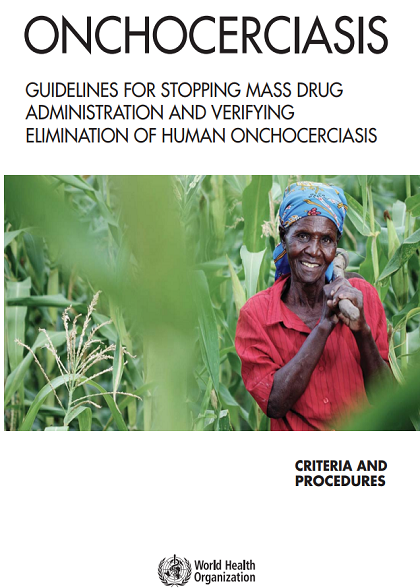
Guidelines for stopping mass drug administration and verifying elimination of human onchocerciasis
Human onchocerciasis (river blindness) is a disease of the skin and eye caused by Onchocerca volvulus, a parasitic worm transmitted by Simulium species (black flies) that breed in fast-flowing rivers and streams. The disease is endemic in 31 countries in sub-Saharan Africa, three countries in Latin America and in Yemen. Since 2013, the World Health Organization (WHO) has verified three countries in Latin America as free of human onchocerciasis.
Whilst nodulectomy and vector control have been implemented in the past, the current intervention strategy is based on mass drug administration (MDA) of ivermectin. In Africa, annual community-directed treatment with ivermectin is the main intervention in most areas except in a few foci where semi-annual treatment is implemented. In the Americas, semi-annual ivermectin treatment with a minimum coverage of 85% is the main intervention; recently, quarterly treatment has been implemented in some foci.


